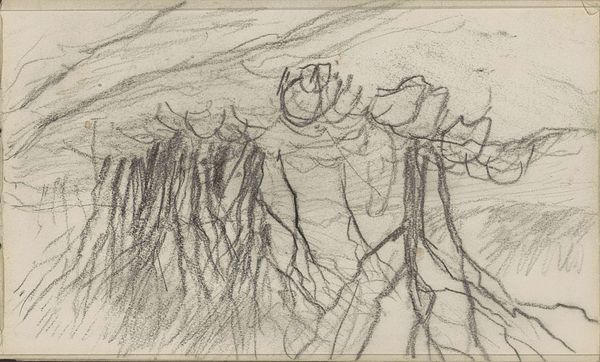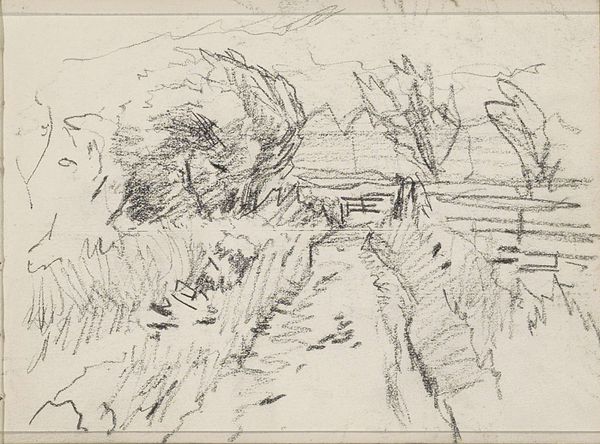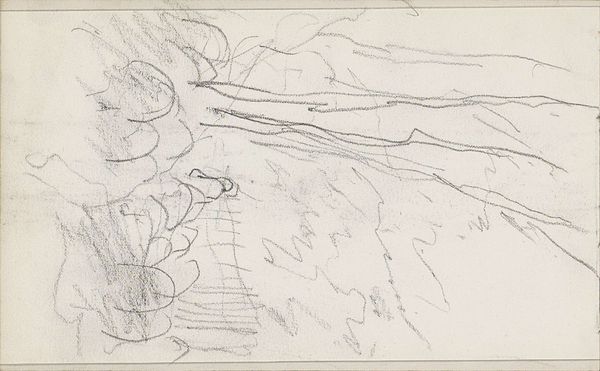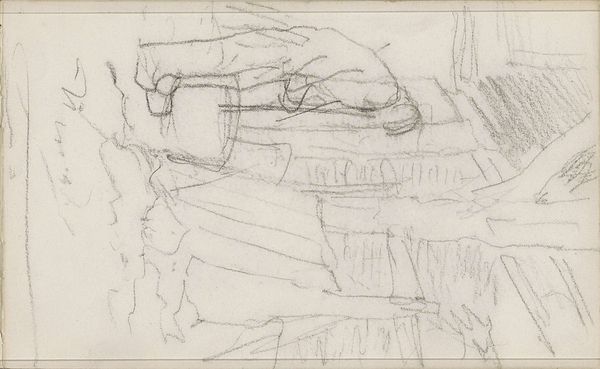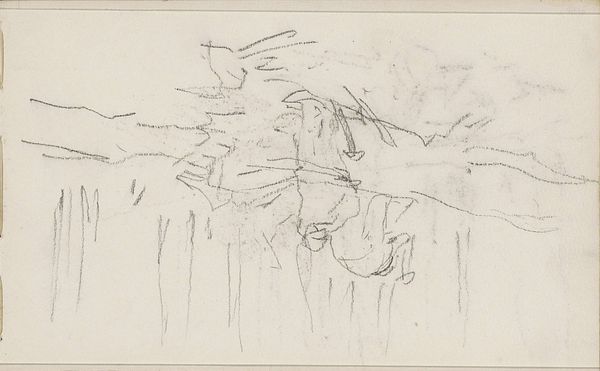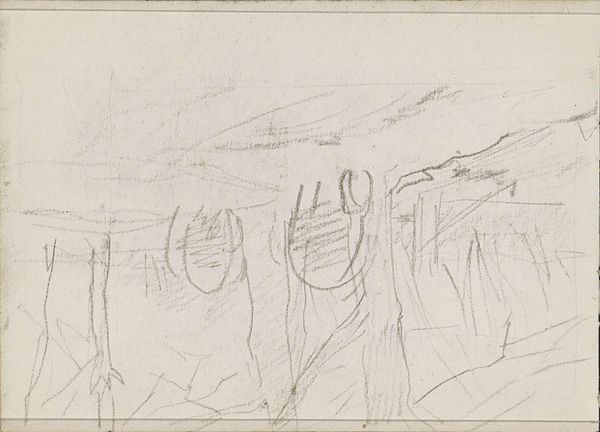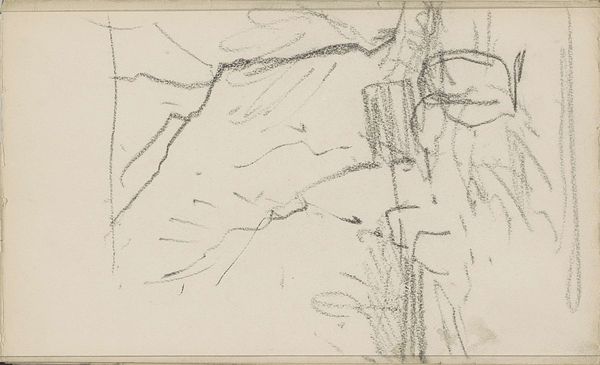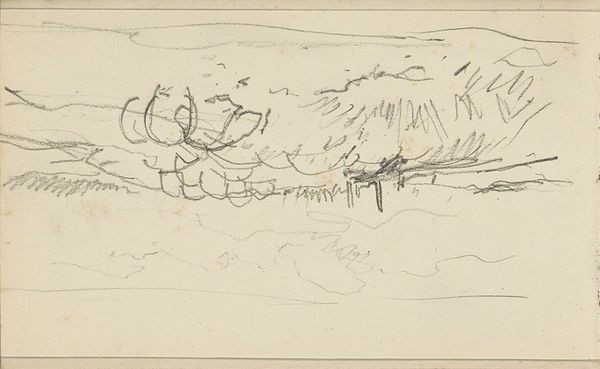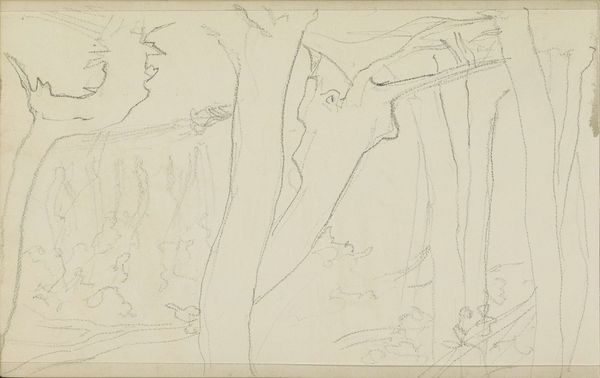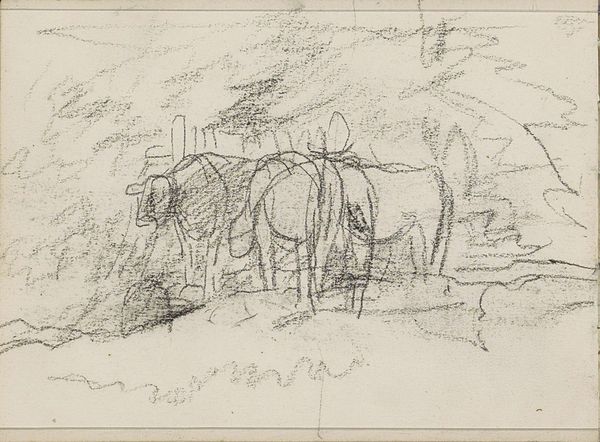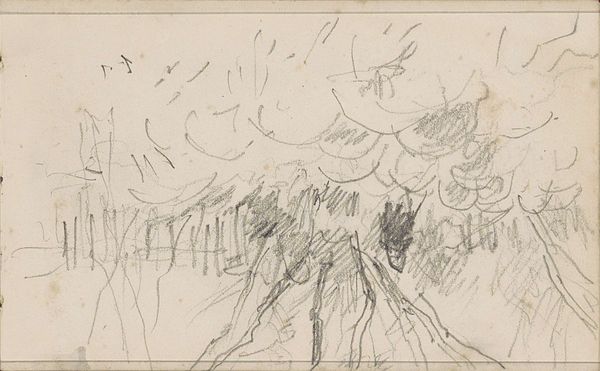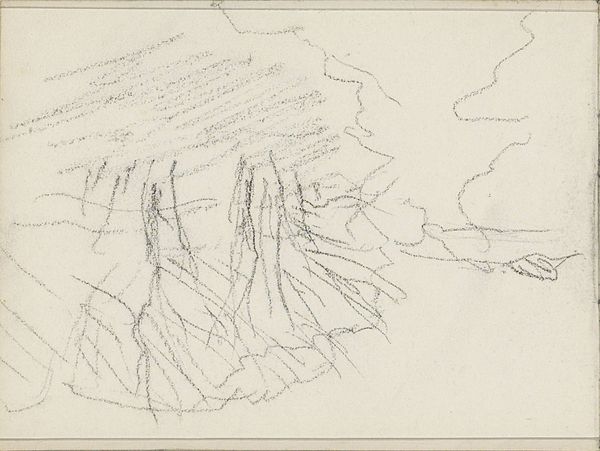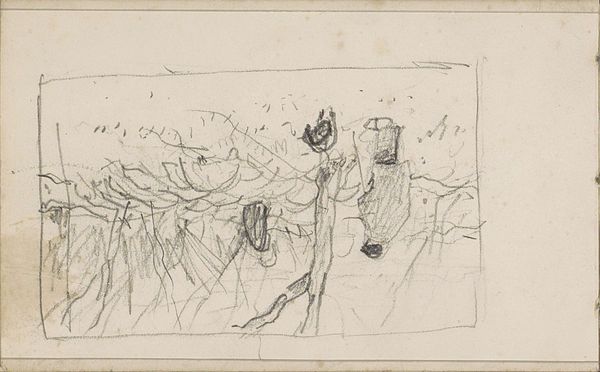
drawing, pencil
#
drawing
#
light pencil work
#
quirky sketch
#
impressionism
#
landscape
#
personal sketchbook
#
idea generation sketch
#
sketchwork
#
ink drawing experimentation
#
pen-ink sketch
#
pencil
#
sketchbook drawing
#
sketchbook art
#
realism
#
initial sketch
Copyright: Rijks Museum: Open Domain
Curator: Here we have Anton Mauve’s “Herder met een schaapskudde bij een groep bomen,” a pencil drawing dating from 1848 to 1888. It's currently held at the Rijksmuseum. Editor: It’s incredibly delicate. Just a few quick strokes, and yet you feel the open space, the subtle movements within the herd, the overall quietness of rural life. It has a provisional quality to it, like a snapshot. Curator: Exactly. Mauve was a prominent figure in the Hague School, which emphasized realism and capturing everyday life in the Netherlands. This drawing gives us a window into his artistic process and the themes that concerned him. The prominence of the shepherd also reinforces enduring representations of leadership and protection throughout Western imagery, subtly connecting this sketch to longer-running social narratives. Editor: I see that, particularly the way the sheep cluster. Sheep as symbols are just dripping with symbolism: innocence, guidance, the flock and the shepherd motif… were these popular themes in the visual culture of the Netherlands at the time? Curator: They were central. Landscape painting provided a lens for reflecting on Dutch identity, especially during the late 19th century when social and economic changes were rapidly reshaping the country. Depictions of rural life offered a nostalgic contrast to urban industrialization. Editor: And that makes the sketchy quality of this drawing all the more potent. It’s almost dreamlike. Look at the way the trees are rendered – as if half-remembered, impressionistic bursts rather than concrete forms. Curator: This drawing, with its quick lines, gives us a sense of Mauve searching for the essential elements of the scene. His attention to light is palpable even in the barest pencil strokes. You can understand why he was a favorite of Van Gogh – the same sensitivity to ordinary landscapes resonates. Editor: Absolutely. Seeing the raw artistic impulse so clearly is really something. You start to appreciate all the symbolic weight embedded within the work and beyond, in a way I never expected at the start. Curator: I agree; by viewing artwork that may otherwise seem commonplace through varied perspectives, we have hopefully unearthed its symbolic language.
Comments
No comments
Be the first to comment and join the conversation on the ultimate creative platform.
